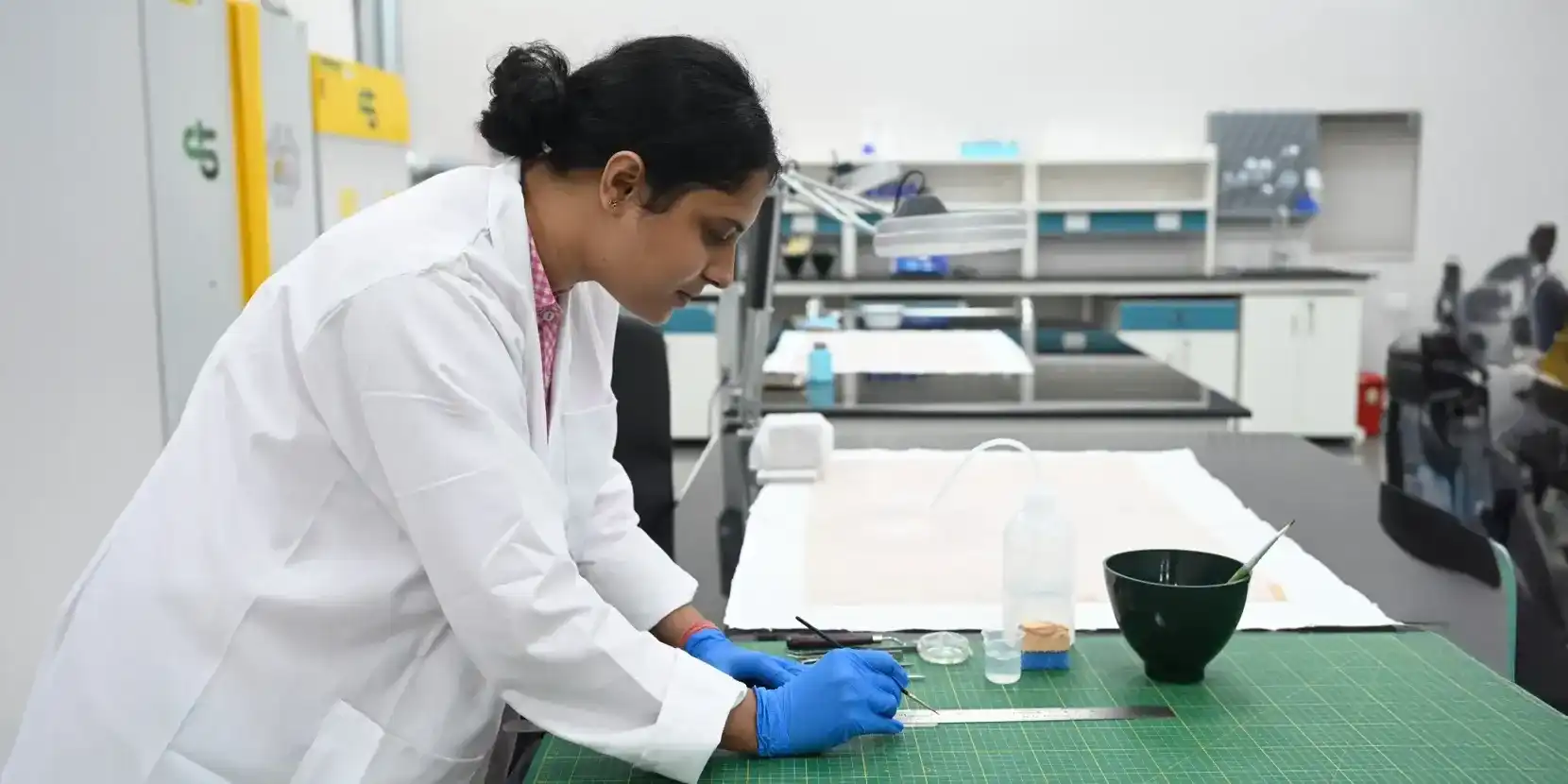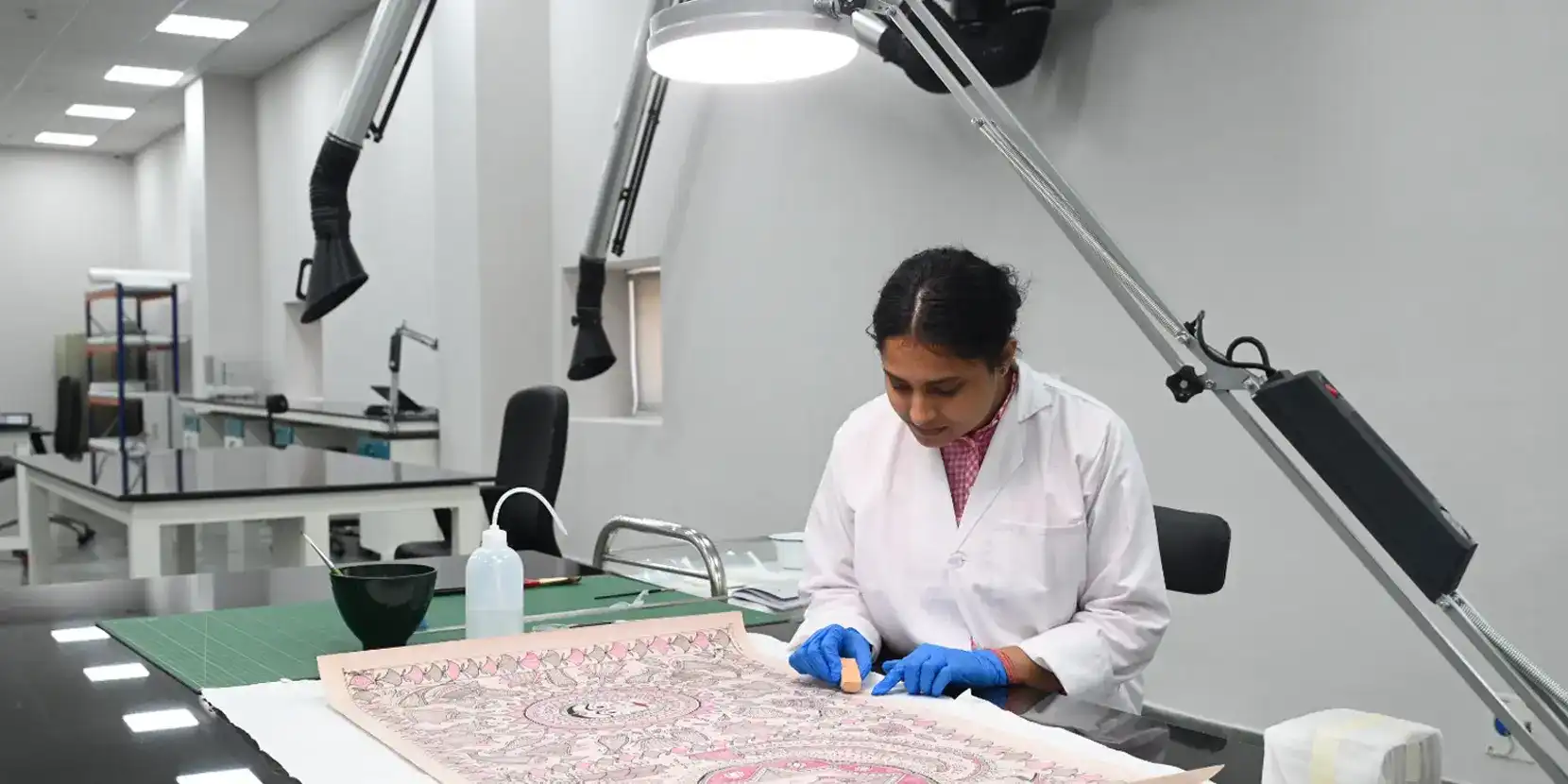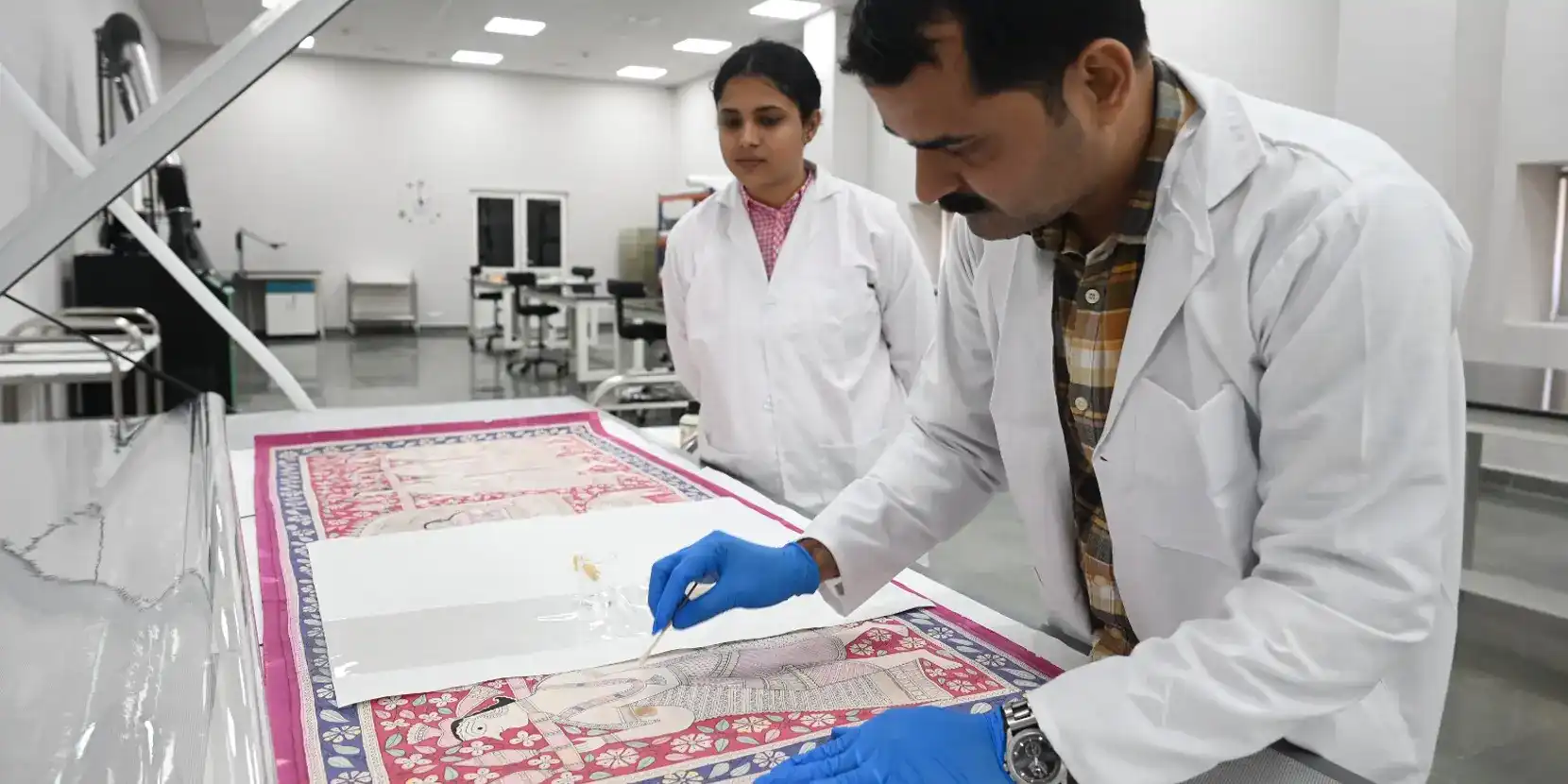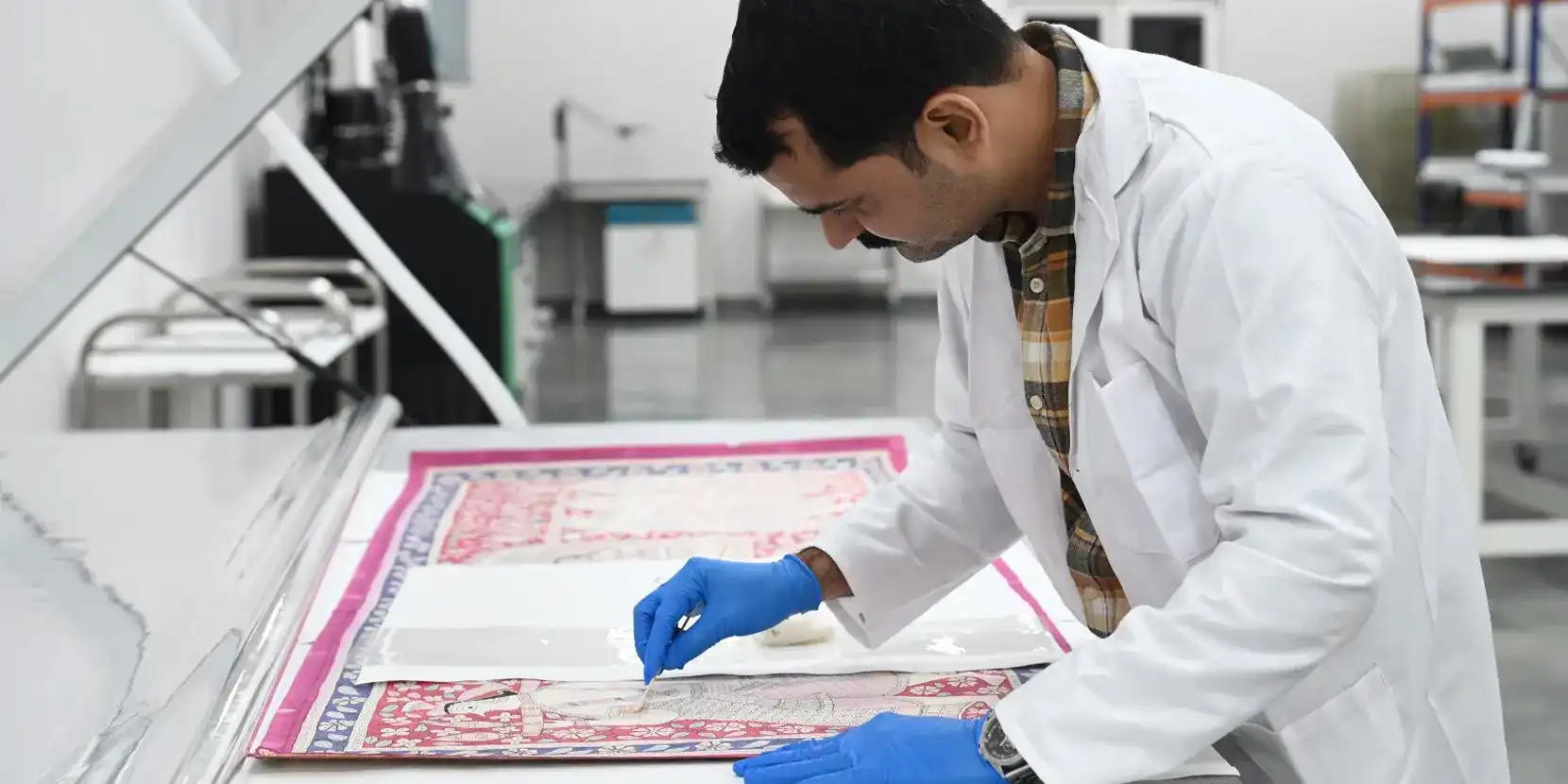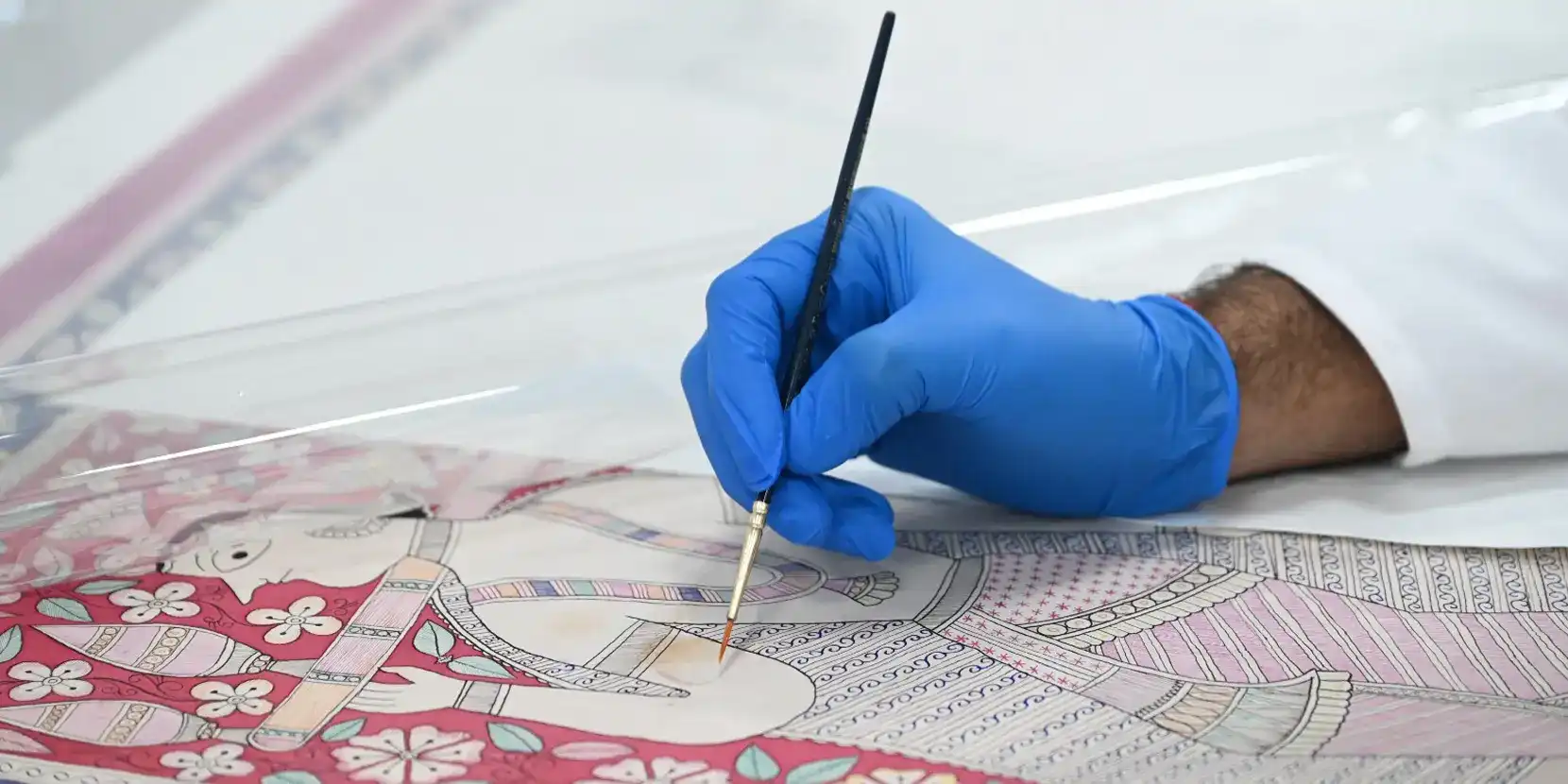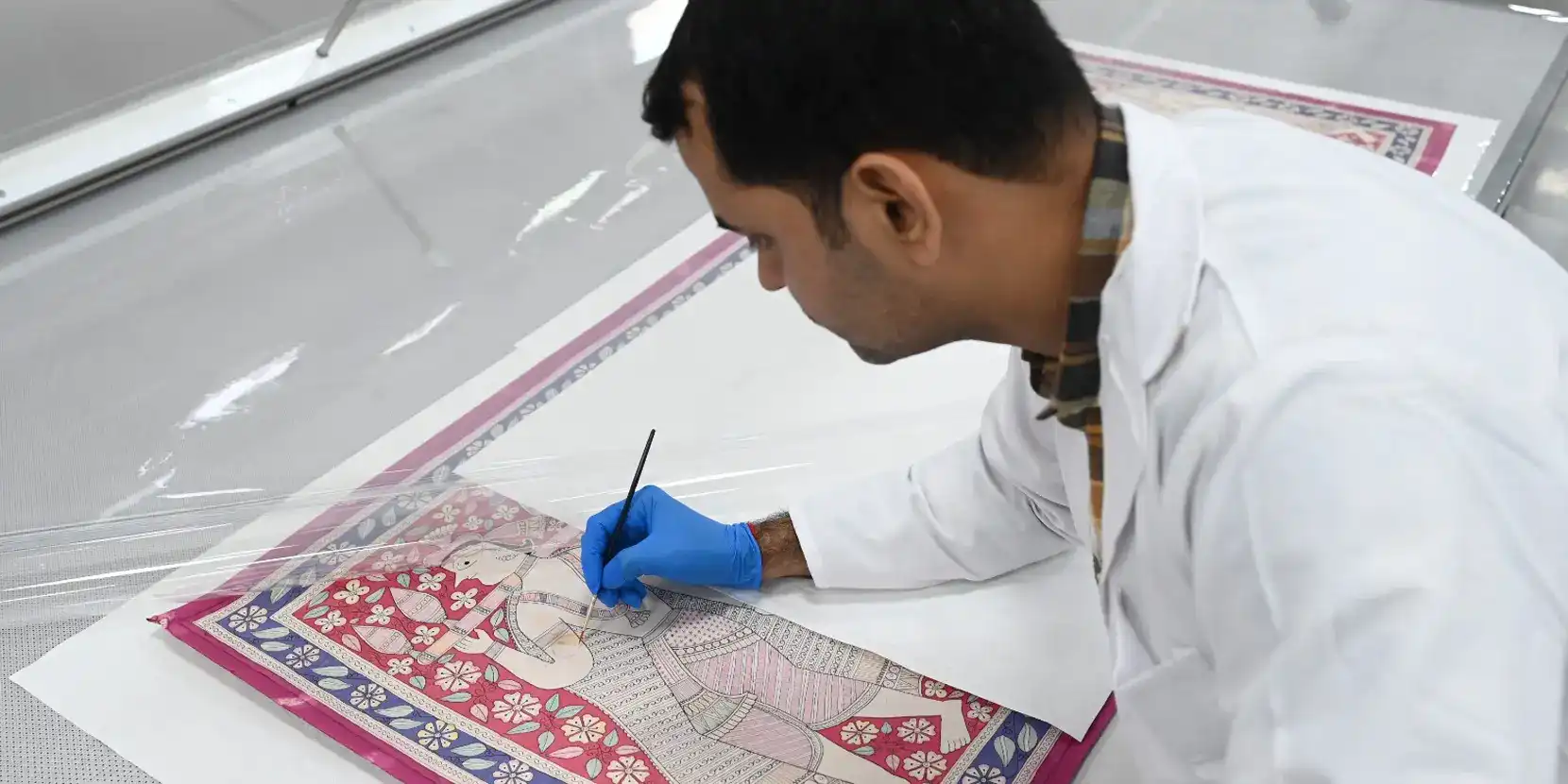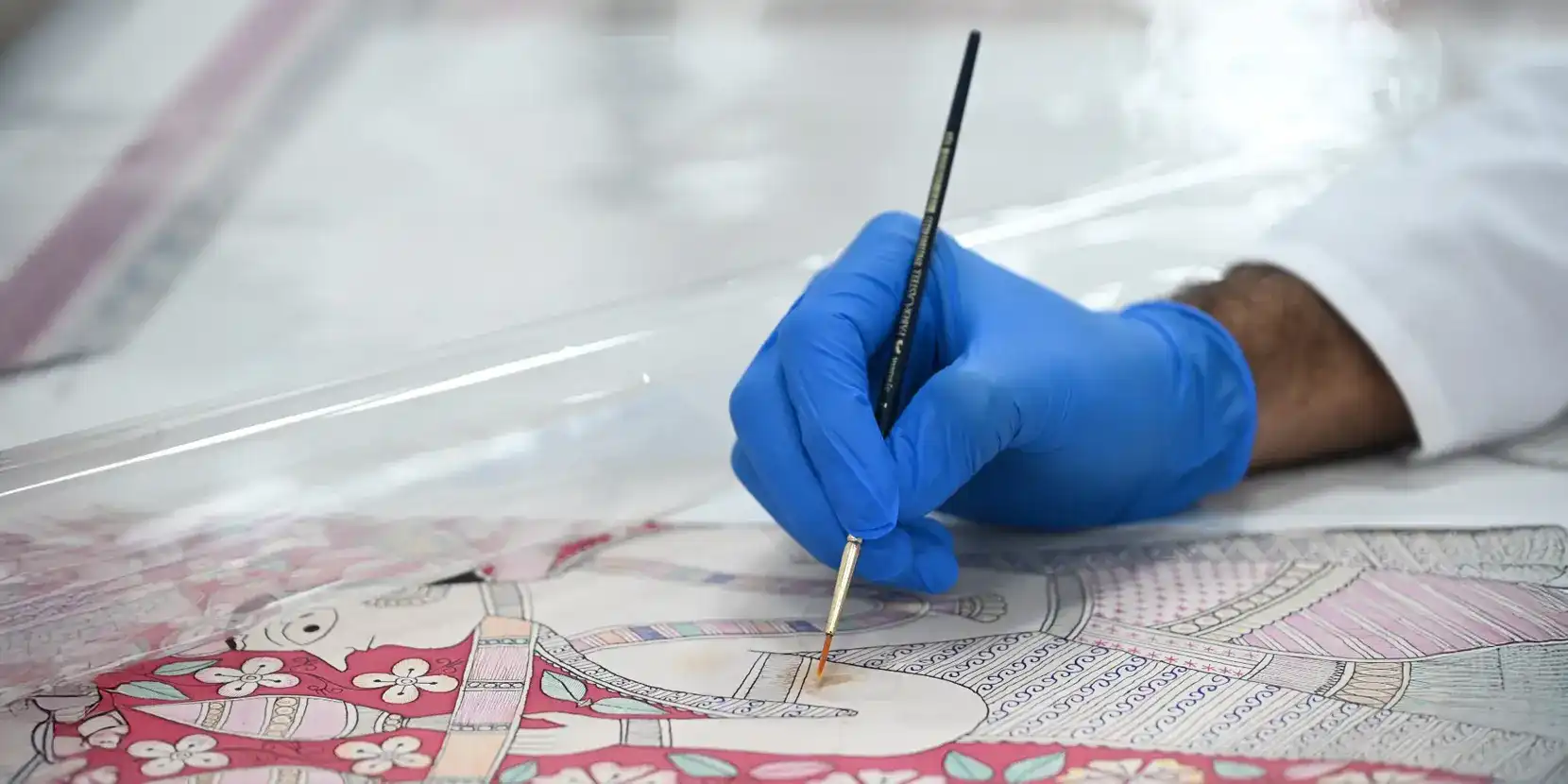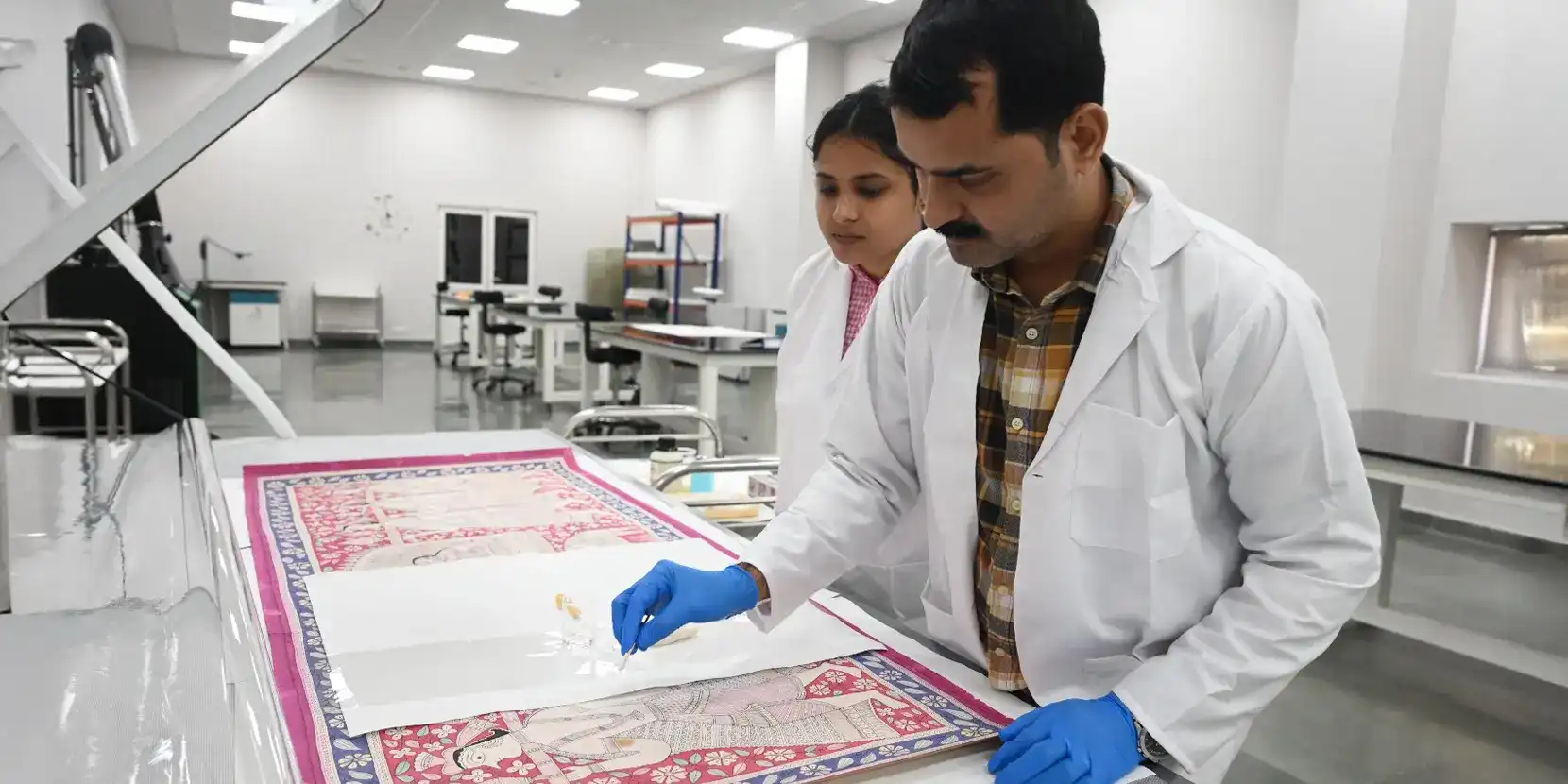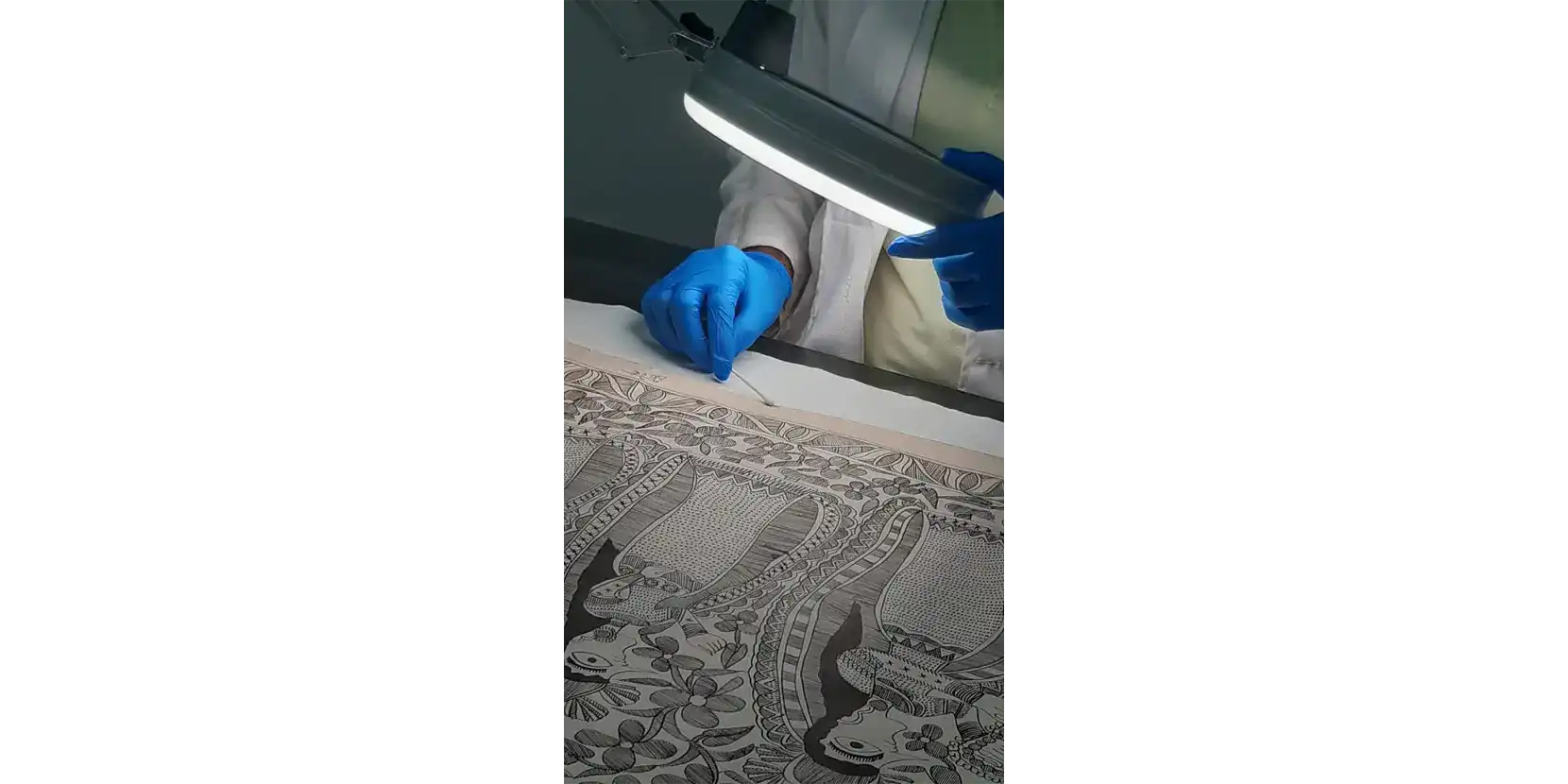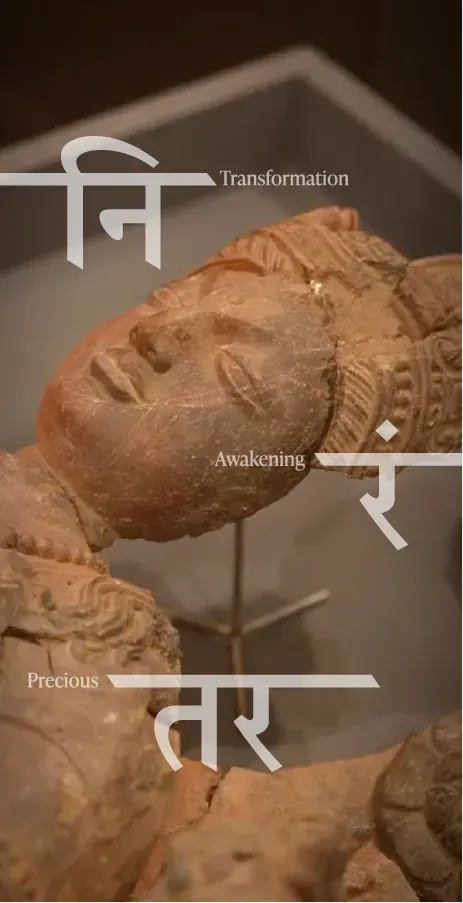
A state-of-the-art conservation laboratory has been established at the Bihar Museum in collaboration with the Indian Heritage Institute, New Delhi, at a cost of ₹2 crore. It was jointly inaugurated by a senior IAS officer and former Chief Secretary of Bihar, Mr. Anup Mukherjee, and Director General of Bihar Museum, Mr. Anjani Kumar Singh. Dignitaries included Additional Director Mr. Ashok Kumar Sinha, Mr. Ranveer Singh Rajput, Mr. Nand Gopal Kumar, and Dr. Satish Pandey from the Indian Heritage Institute. As Bihar’s first modern lab of its kind, it will play a key role in preserving and restoring the state’s rich archaeological and cultural heritage. The Conservation Laboratory at Bihar Museum is committed to the safeguarding of the museum’s extensive collection, which encompasses paintings, sculptures, manuscripts, textiles and archaeological artefacts. The laboratory is equipped with modern tools and equipment which serve the purpose of preventive and curative conservation. Our team of professional and skilled conservators is dedicated to maintaining the integrity and authenticity of artworks through ethical conservation practices. In addition, our laboratory aims to be a centre for training, research and collaboration, which will enhance heritage preservation efforts.
A conservation lab is a specialised space where conservators care for artworks, historical objects and cultural artefacts. In the lab, conservators examine, clean, repair and protect these items to prevent damage and ensure their longevity.
The lab is equipped with scientific tools and equipment to study the condition of the objects, ensuring that all given treatments are safe, ethical and preserve the original value of the items. Conservation labs play a crucial role in safeguarding our cultural heritage for future generations.
Condition assessment or documentation involves the systematic record of complete treatment reports, photographic records and analytical data for each artefact. Detailed examination and documentation of an object's current state is conducted to assess its condition and identify any potential risks of deterioration. This rigorous process ensures that detailed and critical information is preserved for future reference, thereby facilitating ongoing research and contributing to the broader academic discourse in the field.
Preventive conservation involves implementing measures such as environmental monitoring, pest control and ensuring safe storage and display conditions to minimise the risk of damage and deterioration over time.
Remedial conservation entails the application of scientific methodologies for cleaning, stabilisation, repair and restoration, with the objective of repairing damage and preventing deterioration, all while safeguarding the historical and cultural integrity of the object.
Environmental control refers to the systematic management of temperature, humidity, light and air quality to sustain optimal conditions for the preservation and storage of artefacts.
The laboratory offers workshops, internships and educational programs designed to deepen the understanding of conservation related to museum practices. These initiatives aim to raise awareness among students, professionals and the public. This will inculcate a commitment to preserving and valuing cultural heritage within the broader context.
- Advanced cleaning, consolidation, and repair of paintings, textiles, ceramics, metals, and paper-based artefacts.
- Optimizing storage and display environments to prevent future deterioration.
- Gentle surface cleaning and decontamination
- Repair and consolidation of cracks, tears, or structural damage
- Environmental monitoring and control recommendations
- Custom storage and display mounting solutions
- UV lamps for fluorescence analysis and photodegradation studies
- Stereo microscope for detailed condition assessments
- Environmental monitoring systems (temperature, humidity)
- Fume-hood extractors and chemical safety cabinets
- Demineralizers for preparing conservation-grade water
- Low-pressure tables for delicate object support during treatment
